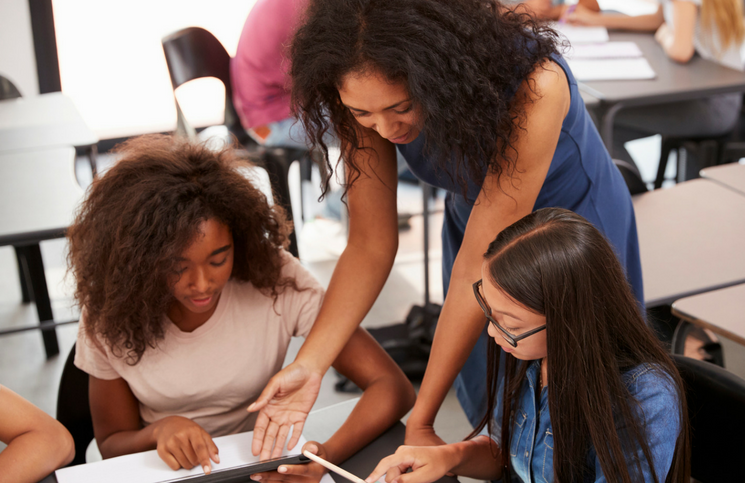by Eileen Wedegartner, Blended Learning Specialist
Embracing techniques serving student success
Nothing can take the place of a teacher in a classroom. Nothing can supplant the role of the person who designs a lesson in which there is time to activate prior knowledge, impart new information, model how to use that information, and structure activities to practice and embed that process.
Teaching is an art, one that is infused with data, pedagogical technique, subject knowledge and evidence-based learning activities. A painter or musician has to know the science of his field in order to create something unique. A painter may embrace new pigments or brushes, and a musician may incorporate synthesizers, audio technology and apps. Similarly, educators adopt new technologies that can help improve student performance while freeing up time to refine their craft and focus on what really matters: helping students succeed.
I remember the days when grade books were kept in print by hand and grade calculations were done with a calculator for each student, one by one. I also remember the day we took a class in using a new program called Microsoft Excel, which had a definite learning curve, but once you set up your macros it freed up hours of time, which was nearly as good as a raise. Now, class lists, attendance, daily grades and everything else are tabulated for us without the touch of pencil to paper.
Despite all the advances in technology, all the programs available to supplement classroom learning, in my experience as an educator and in practicing classroom support, I still encounter fantastic teachers who fear that these technological tools are meant to replace them. I can understand why there are times when it feels like technology is encroaching on the role of the educator, but the net result of technological advances is to free up teacher time that used to be wasted reviewing quizzes and scoring assessments.
During a recent visit to a classroom, I was struck by a student’s comment. The students were working in a program that provided practice on specific areas of weakness that are likely to occur on the MCAS. As the teacher and I walked around the classroom, she conducted her amazing work with the students, noting their good work, jogging their memories when they were stuck, coaching them to remember something they did months ago. I stood in awe as I watched the performance art of teaching: the pause to listen to a student, the quickness to connect the topic to something she knew that particular student would understand, the ability to dispense encouragement constantly along the way.
After a brief interaction, one young man looked at me and said, “I think I learned more today than I have all year. This program is kind of cool.”
I knew he was being hyperbolic, but it made me think about the power of instructional programs that give students instantaneous feedback on what they have mastered and where they still need work. The real-time reporting also enables teachers to see where they need to intervene and coach, helping them use their time more efficiently.
Technology per se did not necessarily increase the young man’s learning, but it did help him and the teacher identify issues and patterns and respond so swiftly that he felt he was learning more. That feeling is a testament to his teacher. He feels successful because his teacher embraced techniques that helped her facilitate student mastery. Without her direction, the technology would lose its effectiveness. Technology is a tool. Its usefulness depends on the skill of the hand that guides it, the hand of the teacher.
Teaching includes many crafts. Putting them together and deploying them in the classroom is an art. Painting is done by painters. Teaching is done by teachers.





